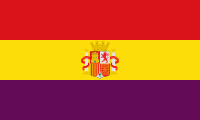
Photo from wikipedia
This article analyses the evolution and geographic distribution of the rural unrest that prevailed during the years of the Second Spanish Republic (1931–1936), a period characterised by political instability and… Click to show full abstract
This article analyses the evolution and geographic distribution of the rural unrest that prevailed during the years of the Second Spanish Republic (1931–1936), a period characterised by political instability and social conflict. The number of provincial strikes recorded in the forestry and agricultural industries and complied by the Ministry of Labour and Social Welfare constitute the primary source of the study. Based on this information, maps of the regional and provincial distribution of the agricultural unrest have been created for the republican period. The results reveal that, contrary to the traditional belief which confines the rural unrest of this period to the geographic areas of the latifundios (large estates), Spanish agriculture, in all its diversity, was hit by collective disputes. Although the areas of the latifundios were most affected by the agricultural reform of 1932, the data show that the extension of the unrest in the Spanish countryside was also the result of the refusal of the landowners to accept and apply the new republican collective bargaining agreement. The number of strikes increased during the period 1931–1933, fell between 1934 and 1935, and increased again during the months of the Popular Front (February to July 1936).
Journal Title: Sustainability
Year Published: 2018
Link to full text (if available)
Share on Social Media: Sign Up to like & get
recommendations!